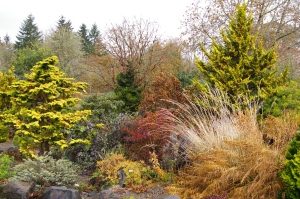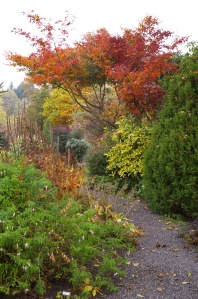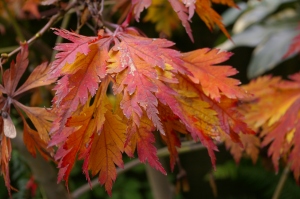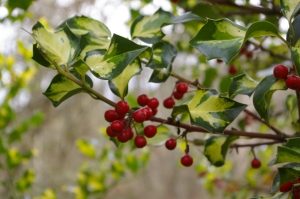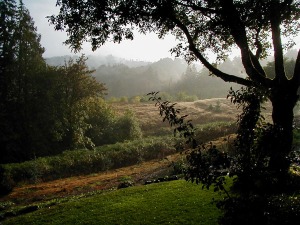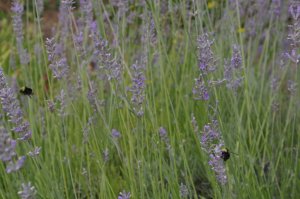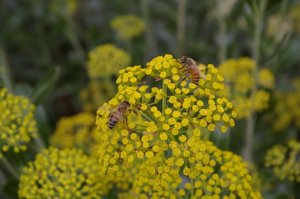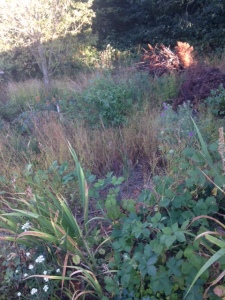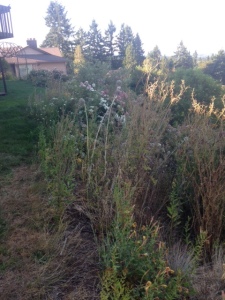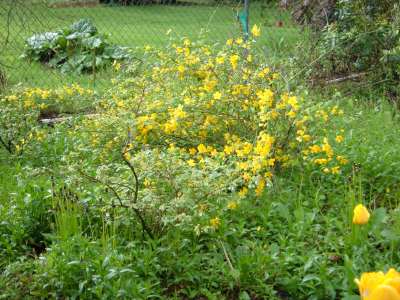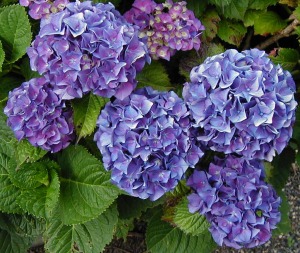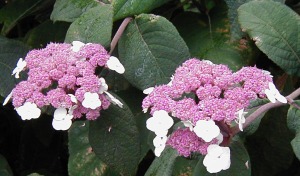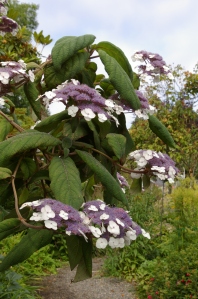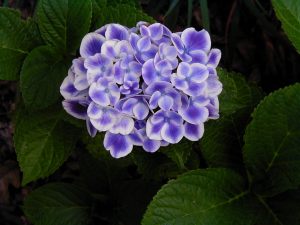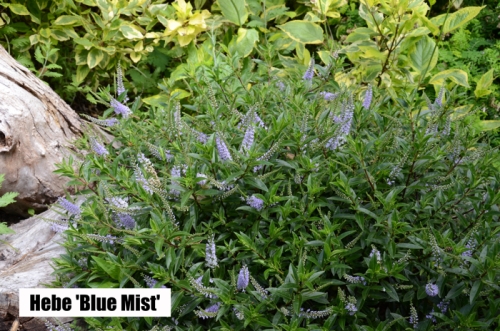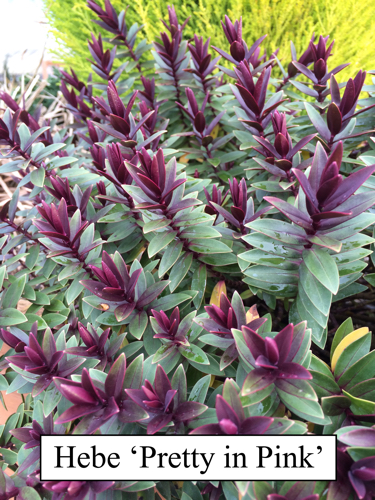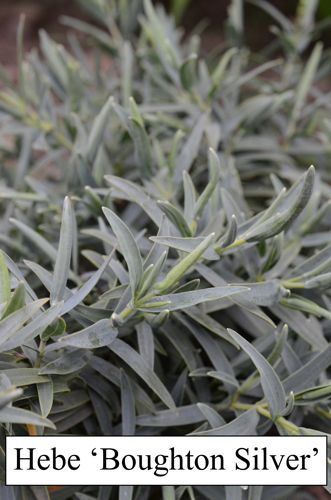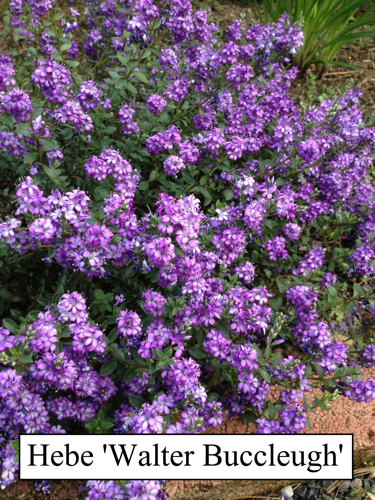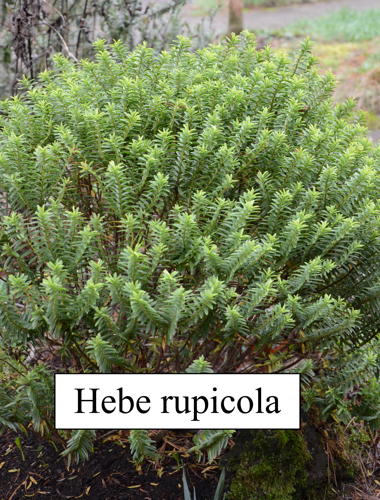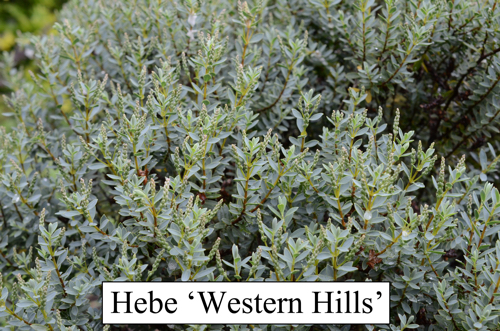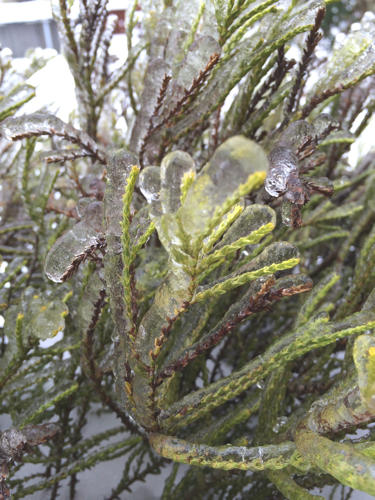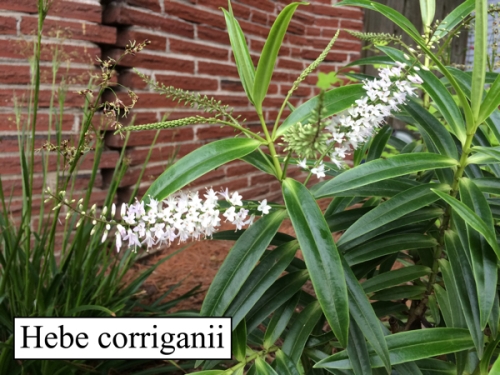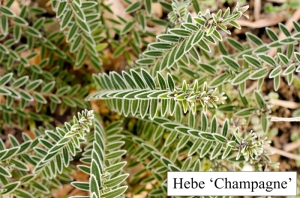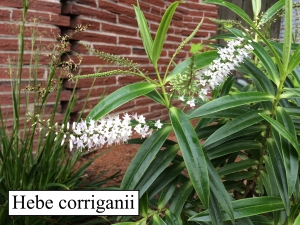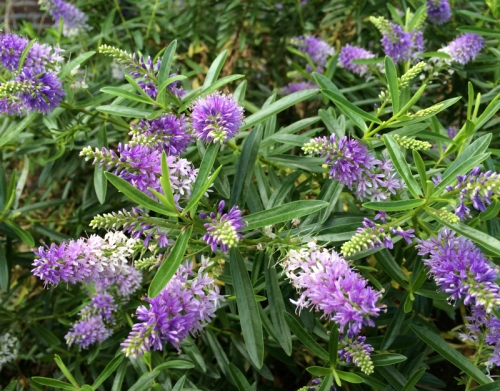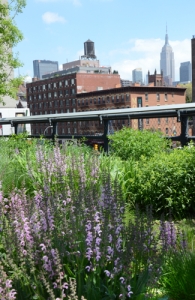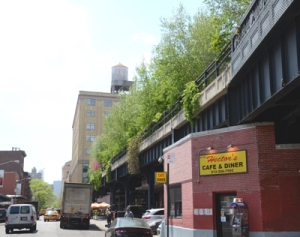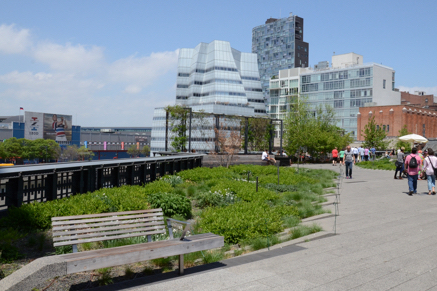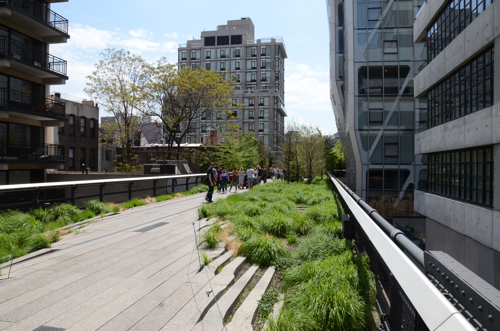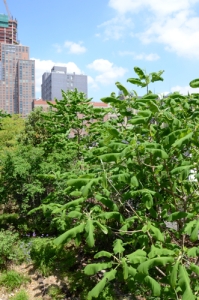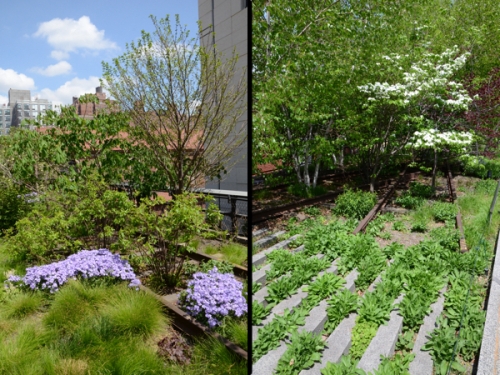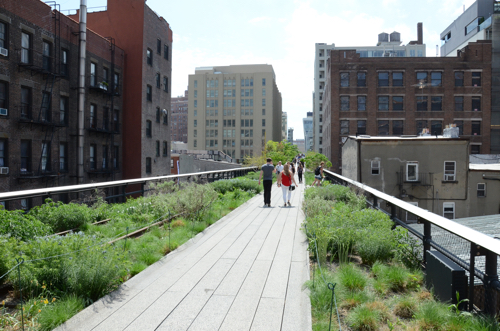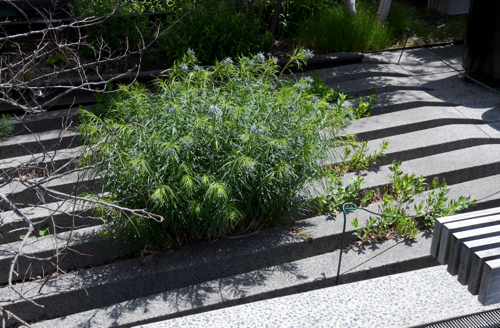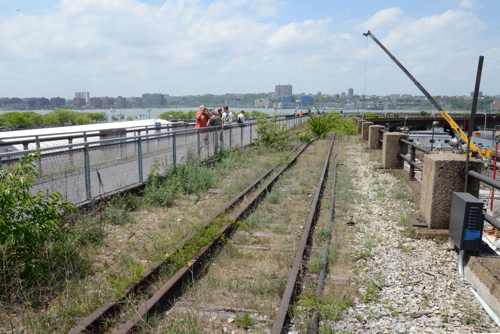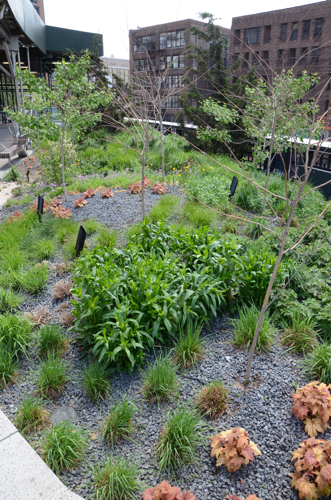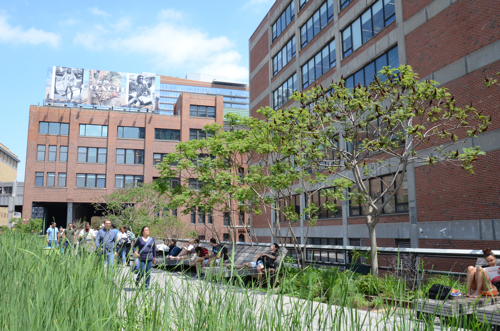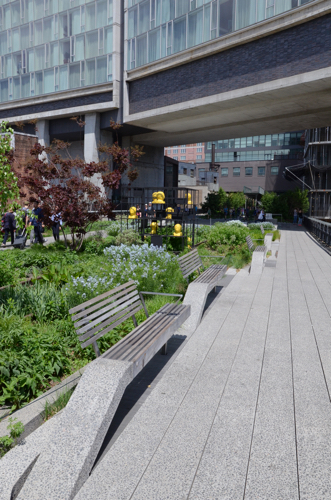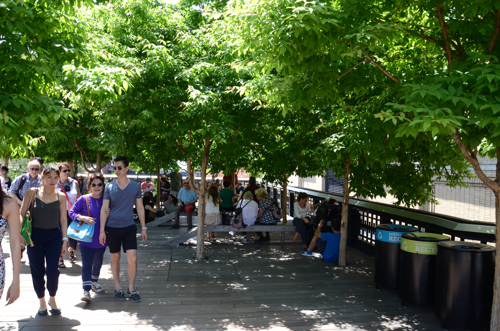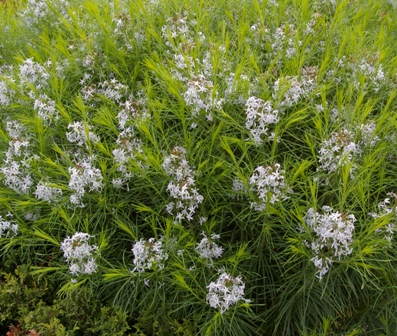Looking back through our blog archives, I came across this great article that Nadine wrote a few years ago. This has been my first year in a new house, so I have been patiently watching the changing light and shade, adjusting the irrigation system and taking note of the evolution of colors in the garden. All summer long, I’ve been making mental notes of things to move and remove, as well as scouting out the nursery for new plants to fill holes and breath new life into my landscaping. There are some things that clearly need to be removed, like gangly, overgrown Rhododendrons and azaleas. Other things I will try to work into a more cohesive plan. I hope this article inspires you to take a fresh look at your landscape as well. -Dana
There comes a time in the life of every garden when the gardener begins to wonder if a renovation is due. It usually sneaks up on you because you planted those trees and shrubs when they were “babies”. The expectation was that it would take forever for them to mature. All of a sudden, they’re blocking the windows and threatening to take over the drive-way! It’s time.
Winter is very good for taking stock of how the landscape has matured. All of the “bones” of the garden (the tree trunks and canopies, the shapes of the major shrubs and shadows of the conifers) stand out. Because the days are cloudy and the sun is low, you also get a good sense of how much the interior of the house is being affected by mature plants. If you sit in your living room, look out and get a closed in feeling, it’s time to take action.
Here are a few questions to ask yourself: 1) Are the trees doing what I want them to do? I.e.: shade, flowers, fruit, anchoring beds, shelter for birds? 2) Are the conifers filling the spaces the way I envisioned when they were planted? I.e.: are they growing straight, interfering with other plants, blocking views or paths? 3) Are the shrubs looking good and blooming well? 4) Are the perennials filling the bed? Are they blooming well? Are the crowns dense and healthy? 5) Are the vines doing their jobs? I.e.: Hiding fences, providing shade, fragrance, flower and fruit? 6) Are the paths clearly visible, easy to walk on and unobstructed by plants? 7) Are the ornamental walls, pergolas, trellises etc. in good repair, clearly visible and functioning as planned? 8) Is the water feature easy to maintain, safe and attractive?
You had a plan when all these elements of the garden went in. Being a living, functioning organism, the garden does things you don’t plan. Sometimes it’s better, sometimes a detriment. If you spend a lot of time working and living in your garden, you are in tune with it. Pay attention to the feeling you get when you look at your garden. This will help you answer the above questions and lead to a decision about major changes.
I never thought I would get to the place where I would have to move or take out major plants. This year, I have taken out two very large shrubs, moved established shrubs from one place to another and begun severe pruning of one of my large clematis vines. What has surprised me is that these changes have led to other major decisions for change. I discovered in an effort to move one of my very favorite small confers, that it had been growing sideways for many years and had a horizontal trunk. It was very unhappy. Trying to transplant it would do no good. Sadly, I have to give it up to the compost pile and wood pile. Gladly, the plants around it will be happier and look better.
My water feature has been a source of satisfaction and great consternation almost since we installed it. The fiberglass reservoir was tipping more and more to one side every year. I was convinced that roots from one of the large firs or cedars were pushing it out of shape. This fall, we finally took the whole thing apart. This entailed moving a lot of rocks! We discovered no roots at all! It was a puzzle. It took a few days of prodding my memory of the initial installation to remember that we really hadn’t set the reservoir properly to begin with. Because of excessive heat and troublesome tree roots, we had dug a shallow hole and decide to prop up the sides. Gravity had done the rest. We’ll do it right when we reinstall.
Making major changes can often be difficult. The decision to remove a large plant that you’ve become accustomed to is often put off until you hate the plant. This is not always a bad thing! Another way to make these changes easier is to assess your property carefully. You will almost always discover a choice plant languishing for want of a better location. (You know, the wonderful specimen bought on impulse.) When the over grown plant is removed and the new put in, the feeling is one of satisfaction and accomplishment rather than loss.
I had a Viburnum that I loved planted to fill a large bare space at the front of the house. It did exactly what I wanted it to…..and more. When I found myself contemplating a very harsh pruning, I knew it was time to remove it. I put it off. Then, I discovered that a lovely variegated Pieris on my property was being overrun by the plants around it. It was ideal for the Viburnum spot. Since it is a slow grower, I also planted a climbing Hydrangea behind the Pieris and against the brick wall of the house. These two plants will fill the space and also light up the north exposure with the white of the leaves and flowers. The claustrophobic feeling of the Viburnum is gone.
This is what to look forward to when you get to the renovation stage. Hard choices are made but a refreshed garden leads to a refreshed gardener. The cycle of learning, discovery and satisfaction continues.
Nadine Black
